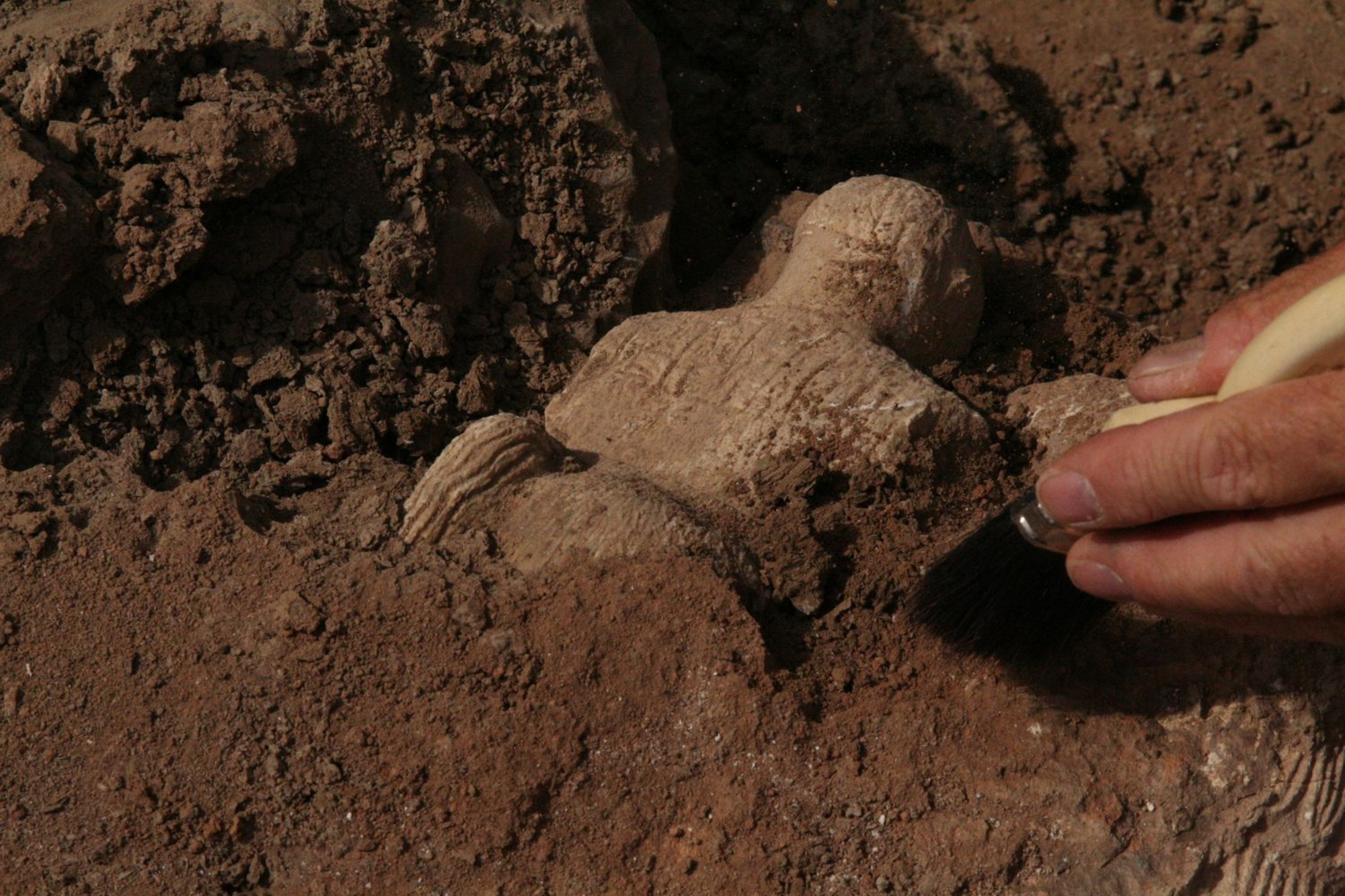
- Home
- Explore the site
- Excavation history
Excavation of the Tell Hariri, in the middle valley of the Syrian Euphrates, 15 km from the border post of Abu Kemal, began in 1933. During the first campaign, André Parrot identified the site of ancient Mari, one of the great capitals of the ancient Near East.
Excavations by André Parrot (1933 - 1974)
After the excavation of the temple of Ishtar, which enabled archaeologists to identify the site, André Parrot discovered the Great Royal Palace and then the buildings of the city's religious centre, including the high terrace and surrounding temples. The thousands of tablets found in the Great Royal Palace and the exceptional series of objects discovered in these buildings, made it possible to understand the history of a "lost city" dating from the 3rd to the early 2nd millennium BCE. After the Second World War, excavations resumed and new sanctuaries were revealed, including the temple of Inanna-zaza. Earlier buildings were also discovered under the Great Royal Palace, including the Presargonic palaces where the famous treasure of Ur was exhumed in 1965.
Excavations by Jean-Claude Margueron (1979 - 2004)
The excavations resumed under the direction of Jean-Claude Margueron provided a better understanding of the regional context in which this "metropolis on the Euphrates" developed, and reveal evidence of highly elaborate urban planning in the first cities in history. The research combined conventional excavation and geomagnetic and regional prospecting. It provided a better understanding of the different stages of the city's development and identified a first city founded around 2900 BCE. New groups of buildings were excavated, including the Small Eastern Palace, but also residential areas and the city walls. Excavations also continued in the Great Royal Palace sector and, from 1990, in the temples area. These excavations, combined with the results of geomagnetic prospecting, shed light on the long-term functioning of an urban area in Mesopotamia.
Excavations by Pascal Butterlin (since 2005)
In 2005, Pascal Butterlin took over as head of the mission with a revised excavation programme for the “metropolis on the Euphrates” and its immediate hinterland. Field research continued until the beginning of the Syrian conflict. It focused on the monumental centre, including the Massif Rouge, the area around the palace and the eastern city, of which three sectors were explored. Archaeologists continued to publish the findings of earlier excavations, and the mission's archives proved invaluable during the Syrian conflict, when combined with the work of evaluating the considerable damage to the site from 2013 onwards.






